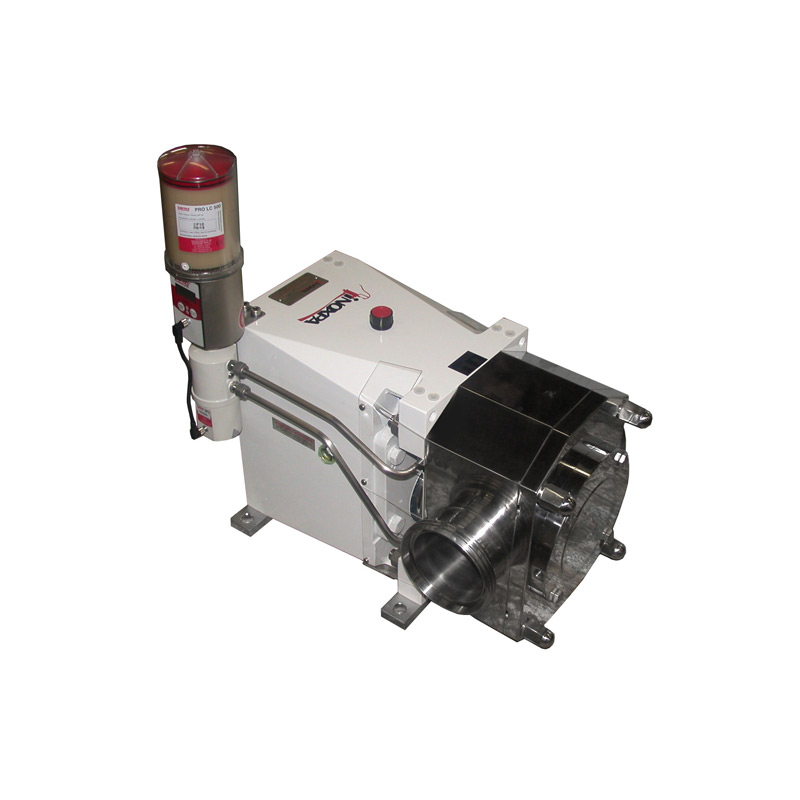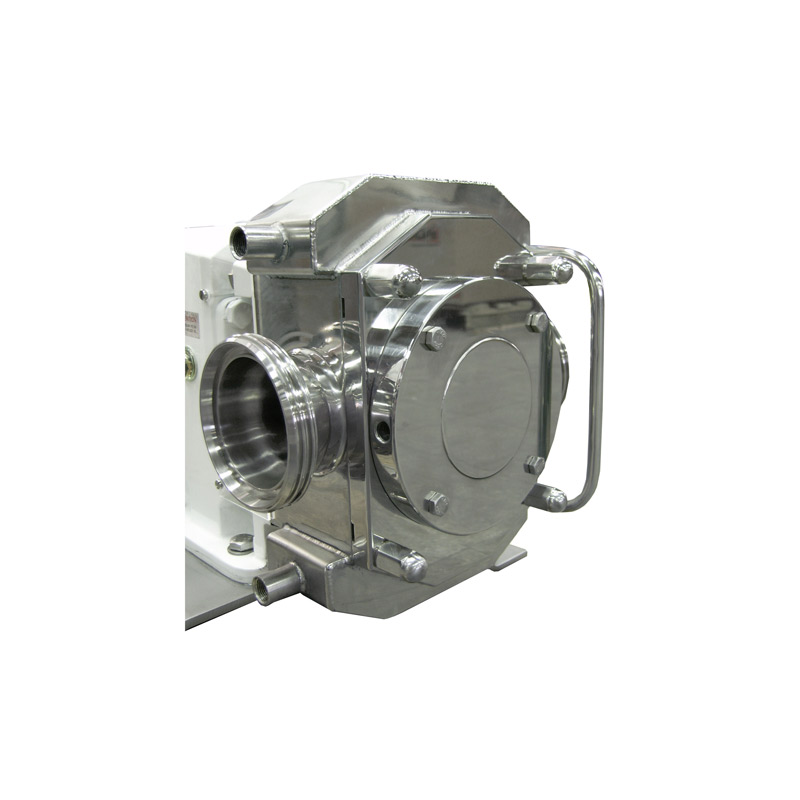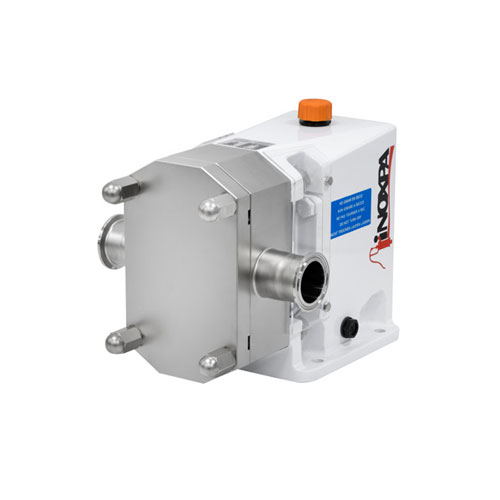Maintaining a constant temperature is very important. Too high a temperature can cause caramelisation of the product, whereas too low a temperature can lead to solidification or crystalisation, resulting in a reduced flow and the corresponding loss in efficiency and /or equipment damage. This could even cause the pump to become completely blocked.
To maintain the temperature of the chocolate and avoid it solidifying inside the pump we recommend fitting a heating jacket to the front cover and/or to the pump body. Heating can be provided by a hydraulic circuit or an electrical resistance.
In some cases, the chocolate might contain suspended solids, such as almonds, hazelnuts, toffee, etc. In these cases we would recommend fitting bi-wing lobes to minimize damage to the solids.
Chocolate is an abrasive, shear-sensitive product prone to caramelising, which means that aggressive pumping could damage both the product and any materials that are in contact with it. For this reason, we recommend low working speeds, always taking into account the type of chocolate and the sealing system being used.
Seals
Guaranteeing that the product is contained within a well-sealed pump is particularly important. For chocolate pumping applications, we offer various options (all in compliance with FDA and EC-1935/2004):
1. Lip seal: the most economical option: maximum working pressure of 4 bar. Only recommended for very fluid and relatively non-abrasive chocolates, otherwise the useful life of the seals could be very short.
2. Lip seal with automatic or manual lubricator: maximum working pressure of 4 bar.
3. Mechanical seal with quench and automatic or manual lubricator: maximum working pressure of 6 bar. It consists of single mechanical seals (SiC/SiC/Viton) with lip seal in the rear chamber.
The lubricator is a high precision system with electromagnetic actuator, which pressurizes the chambers of the mechanical seals with food-grade grease certified according to USDAH1.
The flow of lubricating grease can be adjusted according to the requirements of the equipment being lubricated, potentially lasting up to 12 months. Hence, the friction faces of the mechanical seals will always work with clean grease between the contact surfaces rather than chocolate, which is abrasive and can caramelize, leading to rapid wear of the surfaces.
For options 2 and 3, either a manual or an automatic lubricator may be fitted. The manual option is battery powered and must be started and stopped by the operator. The automatic option works via an external power supply, hence it is possible to link it directly to the pump.








